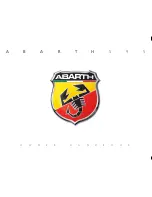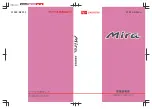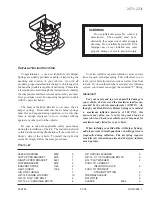
•
The parking space length or parked objects position have changed
after the vehicle has passed the parking space.
•
The temperature around your vehicle changes quickly, such as driving
from a heated garage into the cold, or after leaving a car wash. As a
result, the outside air temperature displayed in the vehicle may not be
close enough to the actual temperature. APA relies on correctly
sensing the temperature outside for precisely positioning the vehicle.
BLIND SPOT MIRRORS (IF EQUIPPED)
Blind spot mirrors have an integrated convex spotter mirror built into
the upper outboard corner of the outside mirrors. They are designed to
assist the driver by increasing visibility along the side of the vehicle. For
more information on your side view mirrors, refer to
Exterior mirrors
in
the
Driver Controls
chapter.
Driving with blind spot mirrors
Before a lane change, check the
main mirror first, then check the
blind spot mirror. If no vehicles are
present in the blind spot mirror and
the traffic in the adjacent lane is at
a safe distance, signal that you are
going to change lanes. Glance over
your shoulder to verify traffic is
clear, and carefully change lanes.
When the approaching vehicle is at
a distance, its image is small and
near the inboard edge of the main
mirror. As the vehicle approaches,
the image becomes larger and
begins to move outboard across the
main mirror (1). As the vehicle
approaches its image will transition
from the main mirror and begin to
appear in the blind spot mirror (2).
As the vehicle leaves the blind spot
mirror it will transition to the driver’s peripheral field of view (3).
WARNING:
Objects in the blind spot mirror are closer than they
appear.
3
2
1
Driving
304
2011 Explorer
(exp)
Owners Guide, 4th Printing
USA
(fus)
















































